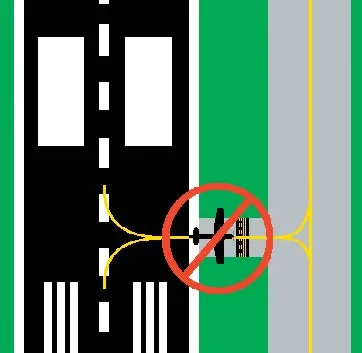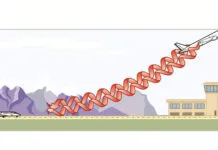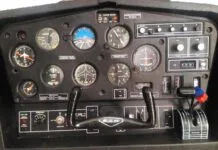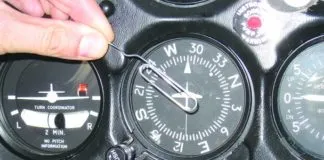Finds Skew-T Useful
I must categorize Mr. Mazza’s comments in “Readback” in the May issue as uninformed. Far from being the domain of only professional meteorologists, Skew-T diagrams are an essential and invaluable tool used by glider pilots and instructors on a daily basis. They can provide useful information for any aircraft flight and I would encourage Mr. Mazza to broaden his horizons, take some competent glider instruction and learn about the Skew-T diagram. George M Tamayo Bullhead City, AZ
When Do You Call Ground?
I enjoy your magazine. The June article by Elim Hawkins, “Towered Field Ops,” contains instructions that contradict what I have been taught and have used ever since my first lesson. He advises to “Call Ground as you are exiting the runway, before the hold-short line. He thinks it might speed up the taxi.
At this point in the landing sequence I am still on the runway. My tail is not past the hold-short line. Does he want me to hear the words “Call this number after shutdown?” Isn’t this also dangerous to leave the tower frequency before directed to do so by the tower?
Jay Flinton
(Location withheld)
We anticipated some comments on this. It’s a bit controversial with differing opinions out there. Let’s break it down.
As you note, switching to Ground too early could cause some angst with Tower. However, most of the time, Tower is already advising you to call Ground well
before you’ve exited the runway. Then, you can call Ground any time after that, but before taxiing beyond the taxiway side of the hold-short line. So, in this case, if you call while still exiting the runway, you’ll quite likely get instructions to continue without having to stop.
If you’re busy and can’t call Ground while still on the runway, or if you’ve not been handed off to Ground, cross the hold-short line, stop, and call. If Tower doesn’t send you to Ground, as you’re still on the runway but exiting, just say something like, “23N to Ground?” or if it’s busy, just make it a statement and simply switch. That’s always worked for me. Usually, though, whether a question or a statement, I do get the formal handoff.
So, here is our guidance: Most of the time Tower is sending you to Ground before you’d need to switch. In that case, call Ground (if you can) before the hold-short line (without stopping) and get instructions that’ll most likely keep you moving. If you can’t call before the hold-short line, stop on the Ground side and call. If Tower doesn’t send you to Ground, just ask as you’re turning off of the runway centerline. If you can’t get a handoff from Tower, stop on the Ground side of the hold-short line and call. (Just as you switch to Tower when you’re ready to depart, once you’re ready, without an explicit handoff from Ground.)
Years ago on my multi-commercial checkride, I got in a verbal argument with the examiner. I was at an airport with taxiway stubs between the runway and the parallel taxiway that were so short that crossing the hold-short line to the Ground side put me on the parallel taxiway, obstructing it, which is what I did. The examiner got very agitated, telling me I couldn’t cross the hold-short line without clearance from Ground. But, I’d been taught as Elim points out, to properly and fully clear the runway as quickly as possible, even if it meant using some of the non-runway surface without an explicit instruction from Ground.
I’ll stand behind Elim’s advice. If Tower hasn’t handed you to Ground, you should stop on the Ground side of the hold-short line and call Ground before proceeding. One notable exception I know of is at Chicago O’Hare. There the mantra is “Don’t stop!” No matter what, don’t stop. It’s a local, tribal-knowledge thing, but it works there.
Often the Tower controllers are too busy to send you over to Ground. And, for every runway/wind configuration, there’s a clear pattern of flow on the ground. So, there you’re expected to simply exit the runway, fit into the flow and call Ground when able. More than once I never got a chance to call Ground because the frequency was too busy. But, I knew the flow, fit into it, and just taxied via the flow to my gate. Yes, it was very disconcerting at first, but once familiar it works quite efficiently. —FB
Leave “George” Alone
Alone I just read the June article on autopilots (“AFCS: Friend or Foe?”) and tried one of the tips mentioned. Great! Proves you learn something new every day. Without thinking about it, I’d been trying to help the S-TEC 60PSS in my 1969 PA28R200 Arrow. Flying a relatively slow airplane makes the effects of winds close to the ground annoying sometimes and I had the tendency to “help” the autopilot but that often resulted in the trim working against my inputs as the article explained. And truly, disconnecting the autopilot when I became annoyed at the approach being not “perfect” would suddenly result in yoke moving contrary to what I was trying to do. I just had never thought about what was really going on until reading the article.
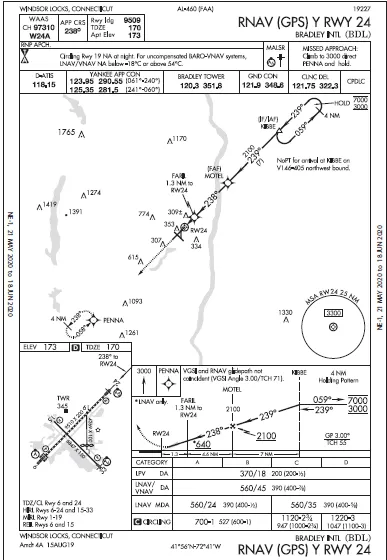
Also, as you note, “George” will try to maintain altitude to the detriment of airspeed. Flying in areas of downdrafts (e.g. virga) will sometimes result in airspeed decay as the autopilot tries to maintain altitude. Again disconnecting the autopilot will quickly show just how much trim force it has been using in this futile attempt!
Thanks for a great magazine to which I subscribe along with IFR Refresher, Aviation Safety, and Aviation Consumer.
Jim Torley CFI/AI
Colorado Spring, CO
I Can Fly an RNP?
I thought it used to be straight forward. RNAV (GPS approaches were okay as they stood. RNAV (RNP) approaches were “authorization required,” and said so right on the chart.
But now I see some odd mix and I haven’t been able to find a clear answer. As a case in point, consider KBDL Rwy 24. RNAV (RNP) Z RWY 24 clearly says “authorization required,” as I expect. But, RNAV (GPS) Y RWY 24 looks normal until you see the small line in the briefing strip (on Jepp, too) that says “RNP apch.”
So, what is going on? Can you fly an RNP approach (like the “Y”) without being authorized? Why does it have RNP in the briefing but not in the name?
Jim McIrvin
Montgomery, NY
Good question. This is a fairly recent change and one that is kind of confusing as well. Never fear, this is still a garden variety RNAV (GPS) approach just like you’ve always known.
We touched on this in January 2020 Killer Quiz, and to borrow some from there: “This approach features the Equipment Requirements box located above the usual notes block. This is being phased into government charts to consolidate ground-based and aircraft equipment required to fly the procedure. Here, it lists ‘RNP APCH’ which would
seem to suggest that the approach requires the ability to fly RNP approaches, but that is not the case. This note refers to the RNP Approach navigation specification, which is published as RNAV (GPS) and GLS approaches (for contrast, RNAV (RNP) approaches use an ‘RNP AR APCH’ NavSpec, since they are ‘Authorization Required’).” A more complete discussion can be found in AIM 1-2-2.b.”
We read ’em all and try to answer most e-mail, but it can take a month or more. Please be sure to include your full name and location. Contact us at IFR@BelvoirPubs.com.

